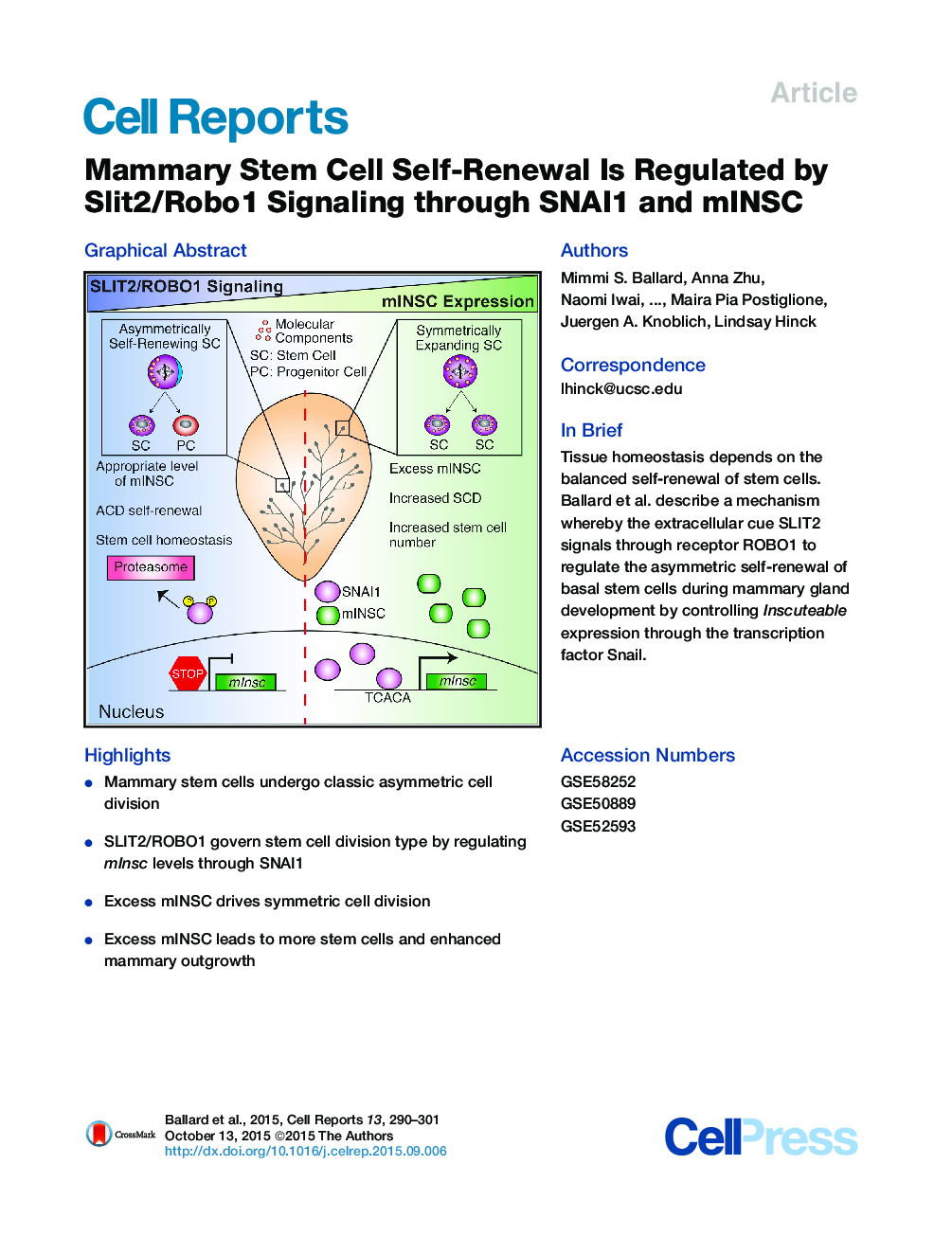| Article ID | Journal | Published Year | Pages | File Type |
|---|---|---|---|---|
| 2040829 | Cell Reports | 2015 | 12 Pages |
•Mammary stem cells undergo classic asymmetric cell division•SLIT2/ROBO1 govern stem cell division type by regulating mInsc levels through SNAI1•Excess mINSC drives symmetric cell division•Excess mINSC leads to more stem cells and enhanced mammary outgrowth
SummaryTissue homeostasis requires somatic stem cell maintenance; however, mechanisms regulating this process during organogenesis are not well understood. Here, we identify asymmetrically renewing basal and luminal stem cells in the mammary end bud. We demonstrate that SLIT2/ROBO1 signaling regulates the choice between self-renewing asymmetric cell divisions (ACDs) and expansive symmetric cell divisions (SCDs) by governing Inscuteable (mInsc), a key member of the spindle orientation machinery, through the transcription factor Snail (SNAI1). Loss of SLIT2/ROBO1 signaling increases SNAI1 in the nucleus. Overexpression of SNAI1 increases mInsc expression, an effect that is inhibited by SLIT2 treatment. Increased mInsc does not change cell proliferation in the mammary gland (MG) but instead causes more basal cap cells to divide via SCD, at the expense of ACD, leading to more stem cells and larger outgrowths. Together, our studies provide insight into how the number of mammary stem cells is regulated by the extracellular cue SLIT2.
Graphical AbstractFigure optionsDownload full-size imageDownload as PowerPoint slide
